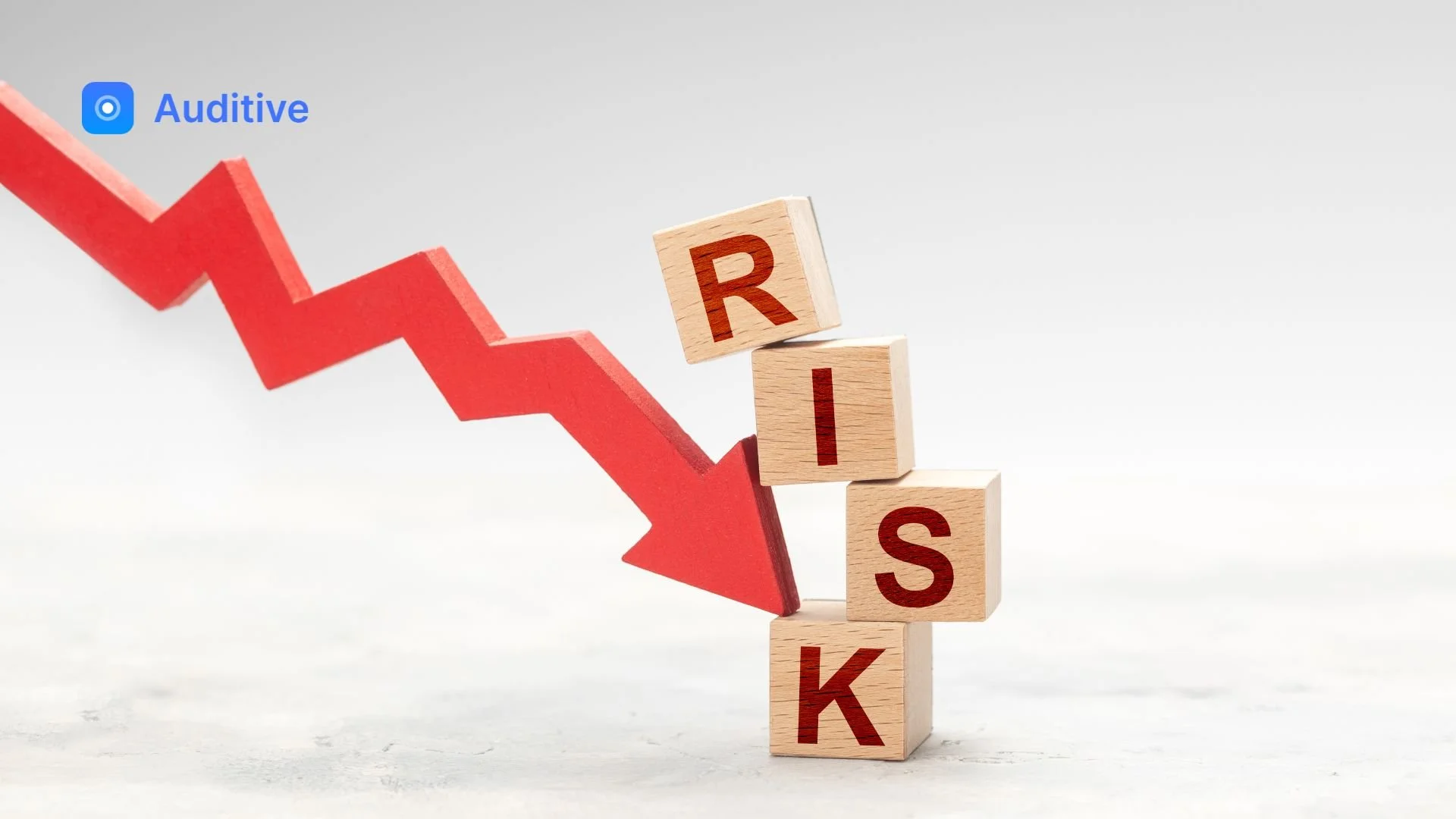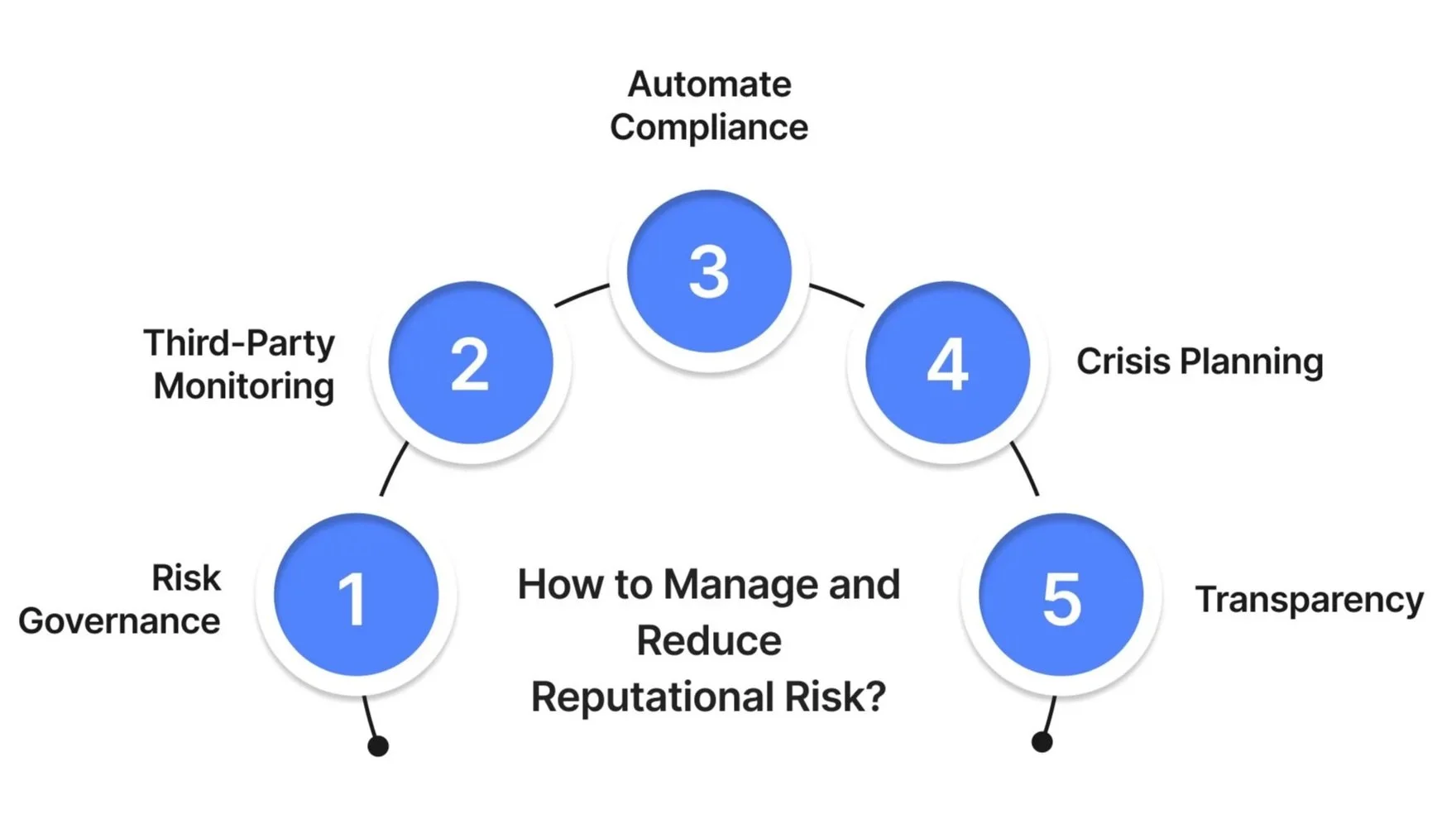Understanding Reputational Risk: Definition, Causes, and Effects
Reputation isn’t just an abstract concept, it’s a measurable business asset. A strong reputation builds customer loyalty, attracts investors, secures partnerships, and supports long-term growth. But in today’s hyper-connected world, this reputation is fragile. A single oversight, whether internal or from a third party, can lead to cascading consequences.
Reputational risk is the potential for negative publicity, stakeholder backlash, or loss of trust that harms a company’s brand, market position, or financial performance. What makes reputational risk especially dangerous is its indirect nature: it often emerges from operational, compliance, or third-party failures that weren’t directly caused by the business itself.
This guide explores the meaning, causes, and impact of reputational risk, and how to manage it effectively in a world where third-party actions directly influence your brand.
Overview
Reputational risk is the threat to a company’s brand and stakeholder trust due to negative perceptions, whether true, false, or third-party-related.
It is amplified by digital media, often triggered by issues like compliance failures, cyber breaches, unethical practices, or social backlash.
Key impacts include revenue loss, stock volatility, legal exposure, talent attrition, and damaged partner relationships.
Proactive strategies like centralized risk governance, real-time third-party monitoring, and crisis response planning help reduce exposure.
Auditive’s platform enhances reputation protection through AI-driven vendor monitoring, compliance automation, and a secure Trust Center for transparent collaboration.
What is Reputational Risk?
Reputational risk is the exposure a company faces when negative perceptions, true or not, begin to affect the confidence and trust of its stakeholders. These perceptions can originate from a wide variety of events: corporate scandals, regulatory non-compliance, vendor mismanagement, or even social media outrage over employee conduct.
It’s important to note that reputational risk doesn’t always arise from a direct failure. Often, it’s the perceived response, such as how quickly and transparently a company communicates, that determines how damage unfolds.
Key Characteristics of Reputational Risk:
Perception-based: Damage can occur even if allegations aren’t factual.
Amplified by digital media: Social networks can spread issues globally within hours.
Cross-functional: Impacts every aspect of the business, finance, HR, legal, procurement, and executive leadership.
Hard to quantify: Unlike financial losses, reputational value isn’t always tracked on a balance sheet, but its impact is very real.
Why Reputational Risk Matters?
The modern business operates in a world of scrutiny. Consumers, regulators, employees, and investors now demand transparency and accountability. When companies fall short, either in ethics, compliance, or risk preparedness, the reputational consequences can be immediate and irreversible.
Here’s why managing reputational risk is a business imperative:
Customer Retention and Acquisition
Brand trust is a key driver of customer loyalty. A damaged reputation leads to attrition, negative reviews, and decreased acquisition rates.
Investor Confidence
Reputation shapes market valuation. Publicly listed companies can experience stock volatility, while private firms may see reduced investor interest.
Compliance and Legal Exposure
Reputational damage often invites regulatory scrutiny and litigation, compounding operational disruption.
Talent Attraction and Retention
A company seen as unethical or unstable may lose existing talent and struggle to recruit skilled professionals.
Partnerships and Supply Chain Impact
Distributors, resellers, and partners may reconsider alliances if reputational damage risks extending to them.
According to Deloitte, 87% of executives rate reputation risk as more important than other strategic risks. Yet, many organizations are still underprepared to manage it systematically.
Top Causes of Reputational Risk
Understanding what leads to reputational exposure helps in building the right safeguards. Here are the most common and high-impact sources of reputational risk:
1. Cybersecurity Breaches
High-profile data breaches not only expose sensitive information but erode public trust in a company’s ability to protect its users.
Lack of encryption and endpoint security
Insecure third-party integrations
Poor breach communication strategies
Auditive’s platform continuously monitors third-party cyber risk, detecting vulnerabilities before they become headlines.
2. Compliance Failures
Violating legal or regulatory standards, whether knowingly or not, reflects poorly on a company’s governance and can lead to severe penalties.
Failure to comply with industry-specific laws (e.g., HIPAA, GDPR, SOX)
Delayed or inaccurate audit responses
Outdated compliance documentation from vendors
3. Ethical or ESG Violations
Today’s stakeholders demand ethical operations and sustainable practices. Any misalignment can spark reputational damage.
Unethical labor practices in supply chains
Environmental negligence or greenwashing
Executive misconduct or discrimination claims
4. Social Media and PR Crises
Digital platforms magnify even minor issues. Public criticism, if left unaddressed, can quickly escalate into lasting brand damage.
Viral backlash to marketing campaigns
Inflammatory statements from employees or leadership
Mishandled crisis communication
5. Third-Party Failures
Vendors and service providers are often the weakest links in a company’s risk perimeter. Their actions reflect directly on your brand.
Poor quality control, unsafe products
Compliance lapses or security incidents
Lack of transparency or falsified certifications
Auditive’s real-time vendor monitoring, AI validation, and Trust Center help reduce this risk dramatically.
Types of Reputational Risk
There isn’t just one form of reputational exposure. Here are the core types businesses must be prepared to handle:
| Type | Description |
|---|---|
| Direct | Caused by the company’s own misconduct or failure. |
| Indirect | Arises from actions of partners, vendors, or associates. |
| Perceived | Based on misinformation, speculation, or negative media narratives. |
| Emerging | New risks not yet fully understood, such as those from AI misuse or deepfakes. |
How Reputational Risk Affects Business Performance
The impact of reputational damage goes far beyond a news cycle. Here are some of the deeper business effects:
Revenue Decline
Customers abandon brands they no longer trust. This impacts sales across all channels.
Stock Price Volatility
Negative press coverage and public scrutiny influence market confidence and valuation.
Higher Operating Costs
Legal battles, crisis management, and rebuilding marketing efforts strain budgets.
Employee Morale and Turnover
Workers may feel disconnected from an employer facing ethical or legal troubles.
Vendor Relationship Breakdown
Suppliers may seek to distance themselves from a company with reputational baggage.
How to Manage and Reduce Reputational Risk
Proactive reputation management is about creating visibility, consistency, and accountability across the organisation and its third-party relationships. Here’s how leading companies are doing it:
1. Centralize Risk Governance
Integrate reputational risk into your enterprise risk management (ERM) program. Ensure accountability lies not just with PR teams, but across legal, compliance, IT, and procurement.
Assign a risk owner
Set clear escalation policies
Include brand reputation in board-level reporting
2. Monitor Third-Party Risk in Real Time
The behavior of your vendors, contractors, and partners is inseparable from your brand perception.
Conduct due diligence during onboarding
Use platforms like Auditive to automatically verify certifications, flag risky vendors, and monitor changes in real time
Continuously assess vendor security and compliance posture, not just annually
3. Automate Compliance and Documentation
Many reputational risks stem from incomplete, outdated, or unverified information. Automating these processes ensures accuracy and audit-readiness.
Use digital workflows for gathering, validating, and storing supplier compliance data
Create version-controlled, trackable documentation trails
Ensure data stays current through auto-reminders and AI verification
4. Plan for Crisis Response
When incidents occur, a fast and coordinated response can contain damage and reassure stakeholders.
Develop communication templates for common crisis scenarios
Pre-identify response teams and decision-makers
Rehearse breach simulations or vendor failure drills
5. Strengthen Transparency and Brand Integrity
Modern stakeholders value honesty over perfection. Proactively disclosing challenges, and how you address them, builds long-term credibility.
Publish ESG reports and supplier diversity data
Communicate early in case of disruption
Use the Auditive Trust Center to foster transparency between buyers and sellers
How Auditive Helps You Protect Brand Reputation
Auditive is built for the modern risk landscape, where vendor behavior, regulatory complexity, and speed of information all shape your brand.
With Auditive, you can:
Gain 360° visibility into third-party risk across compliance, security, and ethics
Verify vendor claims automatically using AI, reducing manual review errors
Monitor reputational exposure in real-time with proactive alerts
Standardize risk workflows through automation, increasing audit-readiness
Enable transparency and collaboration through a secure, unified Trust Center
By building a strong foundation of vendor intelligence and compliance oversight, Auditive helps you prevent small risks from becoming public crises.
Conclusion
Reputational risk is real, fast-moving, and deeply tied to the partners you trust. Managing it requires more than brand polish; it calls for systems, tools, and cultures that prioritize transparency, accountability, and resilience.
With Auditive’s cutting-edge Vendor Risk Management and Trust Center tools, your organization gains the insight and confidence to manage reputational risk proactively, protecting your brand, your stakeholders, and your long-term success.
Ready to reduce reputational exposure and lead with trust?
Book a free demo with Auditive today.
FAQs
Q1. What is an example of reputational risk in business?
A1. A common example is a data breach where customer information is exposed due to weak security practices either internally or via a third-party vendor. Even if the breach is contained quickly, the loss of trust can lead to customer churn, negative press, and regulatory penalties, all of which damage the company’s reputation.
Q2. How does reputational risk differ from operational or compliance risk?
A2. While operational and compliance risks stem from process failures or legal breaches, reputational risk is perception-based. It’s often triggered by how stakeholders interpret or react to events, whether factual or not. Even a minor compliance lapse can escalate into reputational damage if not managed transparently.
Q3. Can third-party vendors affect my company’s reputation?
A3. Absolutely. If a supplier is involved in unethical labor practices, security breaches, or regulatory violations, your brand could suffer by association. That’s why third-party risk management platforms like Auditive are essential for proactively monitoring vendor behavior and compliance.
Q4. How can companies measure reputational risk?
A4. Reputational risk is harder to quantify than financial risk but can be tracked through key indicators such as customer sentiment, social media monitoring, stakeholder surveys, and incident reports. Companies also use risk scoring models and brand equity assessments to gauge potential impact over time.
Q5. What’s the best way to prevent reputational damage?
A5. The best prevention is a combination of strong internal governance and continuous third-party oversight. This includes automated risk assessments, real-time monitoring, transparent reporting, and having a clear crisis response strategy. Tools like Auditive make this easier by centralizing vendor data and flagging early warning signs before issues escalate.






